Images from the ongoing lockdown are clear enough evidence that the experiences of city dwellers differ vastly based on their social privilege. This means that experiences of a city’s environment and ecology differ greatly from person to person too.
Such nuanced readings of social inequalities in India’s urban environments have been pioneered by Dr. Amita Baviskar (AB). Currently a Professor of Sociology at Ashoka University, Sonepat, and the Institute of Economic Growth, Delhi, Dr. Baviskar has explored the politics of environment, development, and popular resistance in both urban and rural spaces for over two decades now. For her contributions to Sociology, Dr. Baviskar received the 2004 M.N. Srinivas Memorial Prize and the 2010 Infosys Prize for Social Sciences amongst many other accolades.
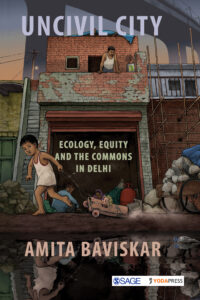
The latest addition to Baviskar’s research is Uncivil City: Ecology, Equity and the Commons in Delhi co-published in March this year by Sage and Yoda Press. Spanning twenty years’ worth of research on environmental politics in Delhi, the book explores how social privilege defines not only Delhi’s urban geography, but its environmental issues and activism too. Before COVID-19 brought the country to a standstill, The Bastion’s Aarathi Ganesan (AG) sat down with Dr. Baviskar on a sunny spring afternoon to discuss Delhi’s particular form of ‘bourgeois environmentalism’, urban segregation in the city, and what the environment really means for the city’s working classes.
AG: Your work discusses the concept of ‘bourgeois environmentalism’. Could you describe what this means?
AB: I developed the term ‘bourgeois environmentalism’ because it was claimed for the longest time that, in India, the kind of environmental action we see is primarily an ‘environmentalism of the poor’.
This concept was most notably used by Ramachandra Guha to contrast environmental movements in India, particularly the Chipko movement, from those in affluent countries. In the latter, Guha said people engage in environmental action to safeguard a style of living and preserve places of sublime beauty and recreation. It’s what he called ‘full stomach’ environmentalism.
In contrast, the Chipko movement was not just about ecological sustainability, but was deeply linked to how people sustain their livelihoods and lives; it was about social justice and ecological sustainability. In India, the red politics of class struggle and social equality, and the green politics of preserving and conserving the environment came together. That analysis did hold true for rural environmental movements, like the Narmada Bachao Andolan, the Niyamgiri protests, and the movement against POSCO.
What I encountered in urban Delhi, though, was not poor people fighting to claim their rights to shelter or workplaces or, for that matter, to protect the city’s ecology. Instead, I saw privileged, upper-class elites using the idea of protecting the environment to achieve goals that were antithetical to ecological sustainability as well as social justice. Not only did their activism do nothing to tackle the city’s serious crises of solid waste and sewage, air pollution and congestion, it made life a lot harder for the working classes.
That’s why I called it bourgeois environmentalism, because it’s mainly about maintaining a certain spatial order–a ‘clean and green’ environment, aesthetically slick and sanitised–without looking at one’s complicity in creating environmental problems in the first place.
AG: How do you see bourgeois environmentalism at work in Delhi?
AB: Bourgeois environmentalism uses the argument of ‘public interest’ to prosecute and pursue specific concerns. But, its idea of the public interest actually ignores or further worsens the poor’s living conditions.
For example, early campaigns to clean up the city’s air resulted in the closure of a large number of small industrial units. This was because, in the ‘public interest’, bourgeois environmentalists went to court and said air pollution is a ‘universal concern’. Never mind the fact that most of these industries weren’t polluting air in the first place. Yet, the courts listened to them.
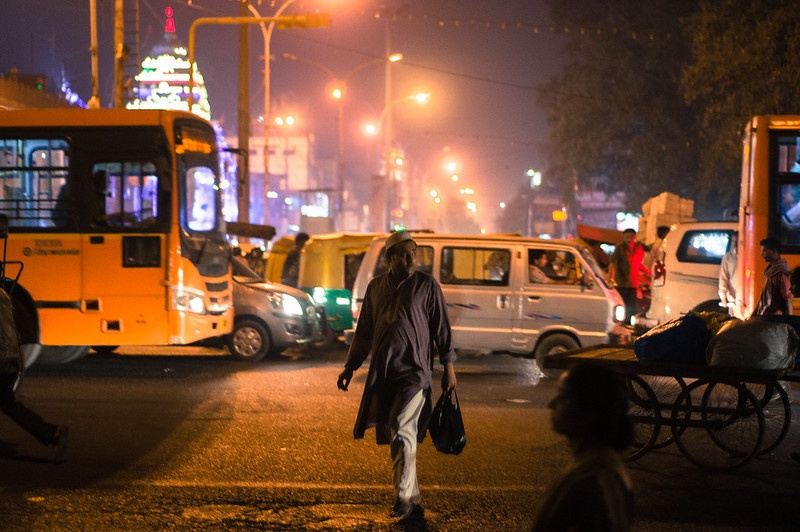
What did not happen was a simultaneous action against the bigger source of air pollution in Delhi: private automobiles. It is the elephant in the room: we blame stubble burning around Delhi instead of what’s going on under our nose and, in fact, what a majority of well-to-do Delhi residents are responsible for. So even today, despite nuanced data on air pollution, we still find that attempts to regulate private vehicles make no headway.
So bourgeois environmentalism has a major blind spot towards its own consumption and complicity in causing environmental problems. As a result, the city’s working classes still get blamed for creating the mess Delhi’s in, in terms of waste, congestion, and infrastructure load.
AG: So, how exactly would you profile the ‘bourgeois environmentalist’ then?
AB: In Uncivil City, I describe them in terms of particular NGOs, whose members are retired bureaucrats and army officers, well-to-do white-collar professionals. They have the cultural capital, the arrogance, and the authority to believe that they speak for the ‘public interest’.
I describe them in terms of what they do and how: they have a fundamental distrust of mass mobilisation as a mode of public engagement, so they directly appeal to the courts instead. Bear in mind, they don’t believe in working with local functionaries (like their MLA, MP, or Councillor); they consider these political representatives to be inherently corrupt because they actually listen to the poor. For bourgeois environmentalists, the poor are only vote banks, not people with legitimate political interests.
Beyond these groups of padhe-likhe log [literate people] who are identified by their actions and socio-economic status, bourgeois environmentalism is also a diffused ideology. People who may not necessarily be elite may still subscribe to the belief that a well-ordered environment matters more than people’s access to ecological resources in the city.
AG: So the power to call an environmental issue a ‘public concern’ in a city like Delhi clearly comes from acquired social capital. But, these issues really do affect us all. Would the environmental concerns identified by Delhiites with less social capital really be any different?
AB: I came to study the urban environment after years of research in rural India, where it seemed to be self-evident that the ‘environment’ referred to forests, rivers, agricultural land, and pastures. The dependence on these resources to sustain their livelihood also seemed to be self-evident.
So in the urban context, my first impulse was to identify similar, obviously environmental issues. I soon realised that for the city’s working-class populations though, unlike the issues identified by bourgeois environmentalists, the environment was not so much about green areas and air quality.
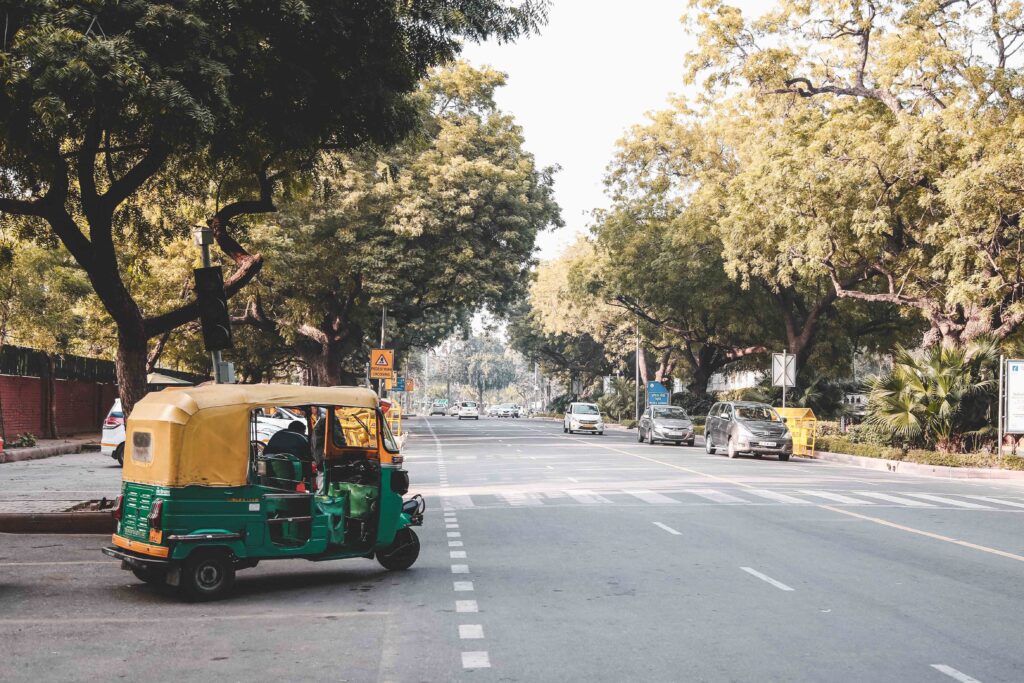
Instead, what mattered to Delhi’s working classes, who are by far the city’s most numerous residents, was having a place to live that was close to work. It was really about habitat: the city as a place to live and work. For construction workers, street vendors, rickshaw-pullers, domestic workers, security guards, and day labourers, it was about having a stable workplace and fair wages and income, a secure home, adequate drinking water and toilets, schools and healthcare, a safe neighbourhood. This habitat included the built environment as well, which confounded me, as most of it was not ‘natural’ but artefactual.
Yet, why is it that a decent place to live and fair conditions of work are not environmental issues for Delhi? If you’re poor, you can’t go to court and demand better living conditions. But, as we have seen, bourgeois environmentalists can and do go to court demanding action against the poor for squatting on public land or ‘dirtying’ the river. And the courts listen to them, even when there is overwhelming evidence that it is the signal failure of the government to build low-cost, legal housing that compels the poor to squat, or when the data show that it is untreated sewage from well-off ‘developed’ neighbourhoods that is the chief source of pollution of the Yamuna.
Clearly, the environment is defined differently by different people. In Delhi, that definition is dominated by people who see the environment in terms of green areas, cleanliness, and aesthetic order, rather than in terms of concerns central to the poor. Bourgeois definitions end up persecuting large sections of the working class in the name of beautification and ‘cleaning up’.
Ultimately, these are all questions of power inequalities, which have been made worse by particular government policies which intensified in the 1990s when liberalisation changed the urban landscape.
AG: What kinds of government policies do you think made urban stratification in Delhi worse?
AB: The government owns a lot of land that it acquired from surrounding villages in the past. However, a lot of that land just lay unused for years. Then there were the marginal spaces – lands along railway tracks, along sewage drains, on the Yamuna embankments. That’s where the working-class people of Delhi settled.

This happened because the government failed to provide affordable and legal housing for them. In all the Plans for Delhi, they severely under-estimated the need for housing. So there was a major shortfall across the board. Then, in terms of the homes the Delhi Development Authority built itself or provided subsidised land for, the lion’s share was for ‘high income groups’ (HIGs). You would think given the pyramidal structure of our society we should be building more working-class homes and less for elites who can fend for themselves, but we’ve done the reverse.
During 1994-2004, for instance, the DDA announced that it would build 1.62 million dwelling units, but it built only 560,000, none of which were for the poor.
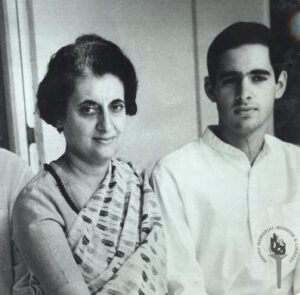
Government policy has swung between accommodating these ‘settlers’ and evicting them. When the V.P. Singh government was in power in 1989-90, the state-supported squatters’ rights to some extent. They were given utilities like drinking water and electricity, their tenure recognised through identity ‘tokens’. The pendulum has swung to the other end when squatter settlements were brutally evicted, like what happened during the Emergency in 1975-77 and in the late 1990s onwards up to the 2010 Commonwealth Games. ‘Reclaimed’ land was used for grand infrastructure projects or sold to private developers. Developing private real estate was actively encouraged by the government from the 1990s onwards.
For example, right here near Delhi University, land owned by the Railways was home to a large 30-year-old basti [slum settlement]. The land was transferred to the Metro Corporation, the basti residents were evicted, and the land sold to a private developer to build multi-storied luxury apartments. Similar processes have unfolded across the city. A whole host of working classes who’d been here for decades were kicked to the margins of the city where there were no services, and where they were so distant from their workplaces that they had to give up those jobs and livelihoods.
AG: So you don’t see any collective urban resistance to such practices?
AB: It’s hard for those who live from hand to mouth to mobilise collectively. Their efforts are also hampered by how governments recognise who would be eligible for compensation in the form of a plot of land. If you had the right documents from before the ‘cut-off date’, you could be entitled to land on the fringes of the city in Bawana or Bhalswa. However distant, however bleak and bereft of amenities, that plot signifies a chance to become a property-owner, a proper legal citizen.
This politics of recognition, based on length of time spent in the city and on the ability to muster formal documentation, divided people and made unified opposition to evictions unlikely. The oldest and most established residents of a basti, who had the right papers, wouldn’t want to jeopardise their chances of getting that plot. Everyone else who didn’t have documents simply disappeared.
There are surveys that show that for everyone evicted from slums–we’re talking about hundreds of thousands of people here–only some 20-25% were given plots of land in faraway resettlement colonies. We don’t know what happened to the rest. Presumably, they are squatting somewhere else, but with life that much harder because they’re not close to their old places of work.
AG: In the past, you’ve said the “spatial segregation of the city creates an apartheid of the imagination,” and you show that this happens along the lines of caste and class. The recent Delhi riots highlighted how religion defines urban space and sites of violence too. In your eyes, how does the urban segregation of Delhi develop along religious lines?
AB: Delhi wasn’t as religiously segregated as it is right now; As I explain in my book, this is something that has happened over the years. Particular events like the 1984 riots made people much more fearful of mass violence. After that, gates started coming up in previously open well-to-do colonies.
Security practices that we now take for granted, like gates and security guards? All of them originate in a particular ecology of fear created through particular political moments.

The 1992 demolition of Babri Masjid was another moment where, although Delhi didn’t witness riots of the kind that occurred in Mumbai, a sense of fear was in the air. Prejudices, where people of one community would not rent to ‘Others’, made things worse. Many Muslim families living in mixed neighbourhoods began feeling unsafe and moved into Muslim-majority areas, leading to a process of forced ghettoisation. Gradually, the populations of Muslims in Delhi have been confined to different areas, be it the walled city, the area around Jamia Millia Islamia, or for working-class Muslims, East Delhi neighbourhoods like Seelampur. These processes have worsened the apartheid of the imagination. Earlier, that sense of alienation was much more about class: one could quite comfortably move through one’s upper-class routine, without at all being aware of where the people who serviced this routine lived.
That dimension has only become aggravated by religious segregation and ghettoisation. This is how our sense of the city gets created — after a point, we have no idea that the city excludes ‘others’, and that they’re living in situations that are very different from the privileged, sanitised, highly securitised landscapes of the elite.
AG: Finally, I have to ask you the question we struggle with the most and thus ask everyone: do you think development and the conservation of the environment and habitats can be balanced? Are they mutually exclusive exercises?
AB: I’m sure many people have said this before me, but our idea of development is so impoverished that it cannot accommodate all the things that really matter. We equate development with economic growth, and that economic growth is currently happening at the cost of cutting the ground from beneath our feet. It’s like taking all your savings and spending them, and yes that shows a spurt in economic growth because that money is now in the economy, but it means that there’s nothing left for the future. There’s precious little left for our combined future even in the present.
The trouble is we don’t see a clear alternative ahead. The question of sustainability can only be answered by developing systems to meet our needs for food, shelter, and employment, in ways that conserve cultural and ecological capital rather than destroy it.
This is not going to happen from the top, because elite interests are antithetical to democracy from below. The only solution is for groups of people to work on developing solutions that respect the cultural and ecological sensibilities of the places they’re living in. The challenge is also to scale the spirit of local efforts such that they challenge the dominant system, which is part of a global capitalist consumerist economy. Without that, it will be hard to drive change. For example, our dependence on fossil fuels is something that requires national-level policies. Local efforts cannot address that. So balancing development and conservation or sustainability is a tough challenge at the moment.
Featured image courtesy of Amita Baviskar. | Views expressed are personal.


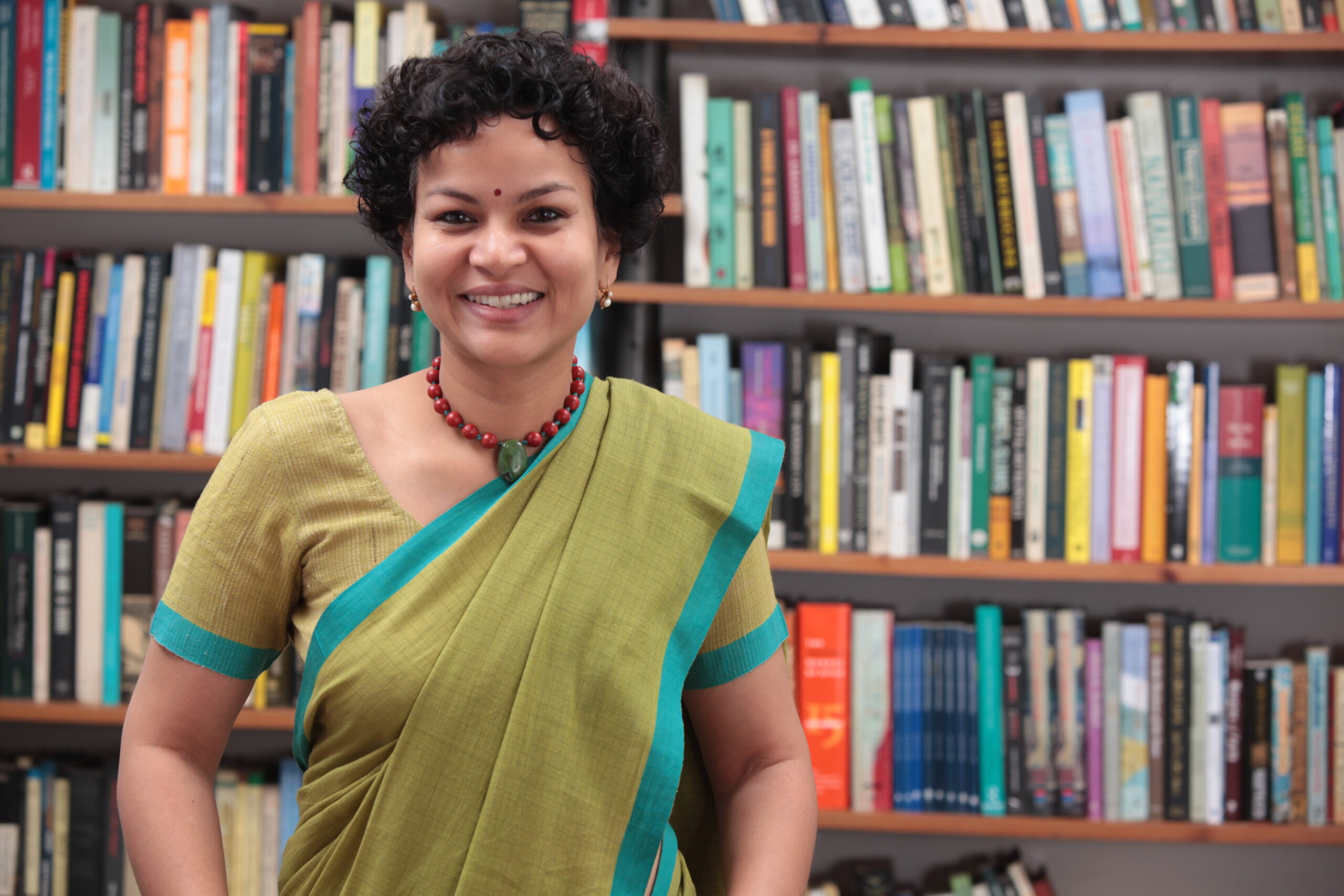




[…] another group, identified by Dr Amita Baviskar as ‘bourgeois environmentalists’, started subordinating human rights to environmental concerns. This group includes the middle class […]
[…] and their efforts were called “bourgeois environmentalism”. Bourgeois environmentalism is mainly about maintaining a certain spatial order–a ‘clean and green’ environment, aest… The environmental health lobbying included efforts to destroy informal settlements through notions […]
[…] You May Also Like: The Bastion Dialogues: Amita Baviskar […]
[…] You May Also Like: The Bastion Dialogues: Dr. Amita Baviskar […]